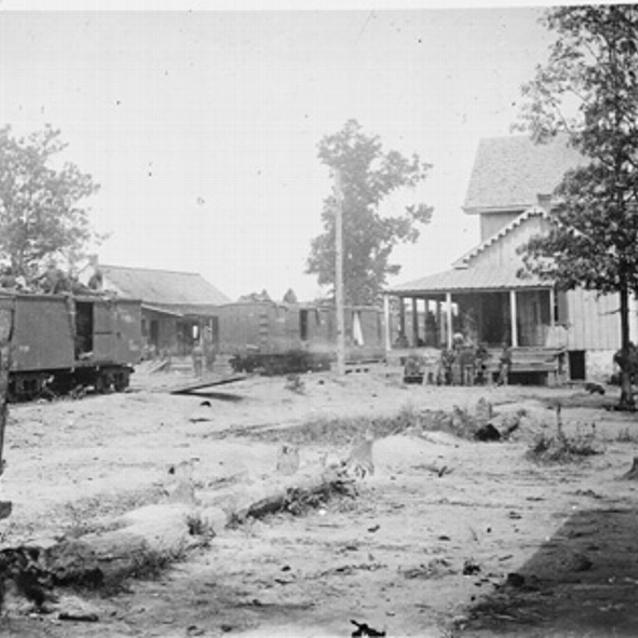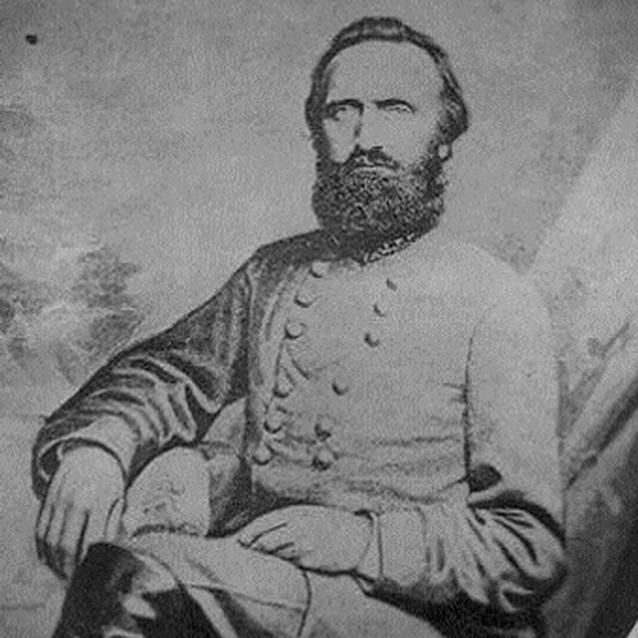Certain McClellan was no longer a threat, Lee left Richmond with Longstreet's wing on August 13th to join Jackson. His plan was to destroy Pope's army while it remained between the Rapidan and Rappahannock Rivers. Once Lee concentrated the two wings of his army, he would have 55,000 men against the 46,000 men of Pope's army. Pope's center remained at Cedar Mountain, his right at Robertson's River, and his left near Raccoon Ford on the Rapidan. The Confederates established a signal station on Clark's Mountain south of the Rapidan opposite Pope's left.
Along the Rappahannock

Library of Congress
Upon his arrival, Lee was quick to appreciate the advantage this topography afforded him. Massing his troops behind Clark's Mountain he might move under its protecting screen, fall upon Pope's left at Somerville Ford, and cut off his retreat to Washington. The opportunity held bright possibilities of success. August 18th was set as the date for the initiation of the movement but unforeseen delays postponed the movement until the 20th. Worse still for the Confederates, Gen. J.E.B. Stuart's adjutant, Maj. Norman Fitzhugh, was captured on the morning of August 18th bearing a copy of Lee's orders. Stuart himself barely escaped capture by Federal cavalry making a scouting expedition south of the Rapidan.
Thus warned, Pope withdrew his army and took up strong defensive positions behind the Rappahannock on August 19th. His army stood fast while a frustrated Lee, following closely, sought an opening and made a series of feints and demonstrations over the next five days. In the meantime, on the dark, rainy night of August 22nd, Stuart's cavalry raided Catlett Station on the Orange & Alexandria Railroad with the intention of cutting Pope's supply line. The bridge at Catlett proved too wet to burn but Stuart was rewarded in the capture of Pope's headquarters baggage. A dispatch book revealed that 20,000 troops were within two days' march of the front. Within five days other expected reinforcements would swell Pope's numbers to over 100,000 men. Lee realized the window of opportunity to destroy Pope's army would vanish if he did not act swiftly.
A Daring Move: Jackson's Flank March

Library of Congress
The situation was desperate and demanded a bold move. Quickly, Lee made an unorthodox but audacious decision. Despite the growing strength of the Union army, Lee elected to divide his forces. Jackson with Stuart's cavalry, comprising about 25,000 men, was to be sent on a wide flanking movement around Pope's right to destroy his communications with Washington. Commenting on this decision, a Jackson biographer later said "we have record of few enterprises of greater daring."
With Lee and Longstreet covering the line of the Rappahannock, Jackson began his march from Jeffersonton on the morning of August 25th. Passing through Amissville and crossing the upper Rappahannock at Hinson's Mill, Jackson's column proceeded to Orlean and bivouacked for the night at Salem. The next day Jackson pushed eastward through Thoroughfare Gap, Haymarket and Gainesville, reaching Bristoe Station on the Orange & Alexandria Railroad about sunset. Never did the "foot cavalry" better deserve its name. In two days it had covered approximately 55 miles. That night Jackson sent two regiments of Isaac Trimble's brigade, supported by Stuart's cavalry, to capture Pope's huge supply depot at Manassas Junction. The task was accomplished with little effort in the early morning hours of August 27th.
Part of a series of articles titled The Vortex of Hell.
Previous: Union Command Trouble
Next: August 28, 1862
Tags
Last updated: February 4, 2015
